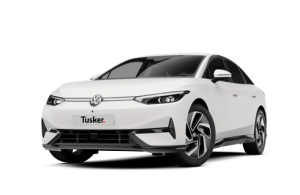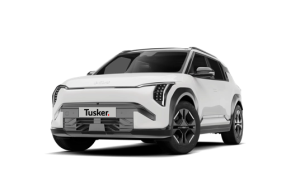Everything you need to know about EV salary sacrifice schemes
As the shift toward electric vehicles (EVs) accelerates, salary sacrifice car schemes remain one of the most effective ways for businesses and employees to benefit from cost savings while supporting their sustainability goals. With Benefit in Kind (BiK) rates for EVs still significantly lower than petrol and diesel cars, now is the perfect time for companies to adopt or expand their salary sacrifice offering.
What is an EV salary sacrifice scheme?
Salary sacrifice schemes allow employees to give up a portion of their gross salary in exchange for a non-cash benefit, such as childcare vouchers, pensions, or a company car. For EVs, this arrangement provides substantial tax savings. Employees save on Income Tax and National Insurance Contributions (NICs), while businesses benefit from lower Class 1 NICs.
Beyond tax savings, employees gain access to brand-new, fully maintained and insured cars at corporate rates, potential VAT efficiencies, with no upfront costs. If only pure electric and ultra-low emission vehicles (ULEVs) are offered, both employer and employee stand to save even more after Class 1A NICs and BiK .
The fixed monthly cost also includes fully comprehensive car insurance, total loss protection, road tax, breakdown cover, MOT, maintenance, replacement tyres and accident assistance.
Employer benefits of Salary Sacrifice

- Attract and retain talent – Offering EVs as a benefit enhances your company’s employee value proposition.
- Support sustainability goals– Reduce your corporate carbon footprint and align with environmental targets.
- Significant tax and NI savings – Lower NIC costs create financial efficiencies for your business to keep or share with your employees to further enhance value.
- Minimal administration – Partnering with an experienced provider ensures seamless scheme management.
- Risk protection – Including employee departures, redundancy, parental leave, and long-term sickness.
Employee benefits of Salary Sacrifice
- Lower monthly costs – Drive a brand-new EV at lower amounts than on a private lease.
- Low Benefit in Kind tax – Fixed at just 3% BiK for fully electric vehicles in 2025 and rising slowly t by 1% annually until 2027/8 and then 2% annually until 2029/30.
- Reduced running costs – Save on insurance, fuel, servicing, and maintenance across the term.
- All-inclusive package – Insurance, servicing, breakdown assistance, and road tax are typically included.
Some people have previously hesitated to make the switch to electric due to concerns over range and charging times – particularly those who travel long distances. But with EV technology evolving rapidly and the average car able to cover nearly 300 miles on a single charge, most commutes can be easily covered by an electric vehicle or a plug-in hybrid. The UK now boasts over 70,000 public charging points*, with rapid chargers widely available, particularly across the motorway service station network. Home charging solutions and workplace charge point installations further ease concerns.
Working with a provider such as Tusker we can offer a wide range of models that include Battery Electric Vehicles, self-charging hybrids (known as mild hybrids) and PHEVs (plug-in hybrid electric vehicles). Having a variety of options means choice both for those drivers who tend to only make short, local journeys, and for drivers who cover longer distances each day and who need a car with a longer range.
With BiK rates set at 3% for EVs in 2025 (rising gradually towards 2030) and ongoing savings on running costs, implementing an EV salary sacrifice scheme has never been more beneficial. Companies that act now will not only save on costs for their employees but also position themselves as leaders in sustainability and employee benefits.
Here at Tusker, we’re passionate about electric and some of the team’s current favourite EV cars are:
VW I D.7
D.7
- 435 miles range
- Front massage seats
- Heads-up display

Kia EV3 and EV6
- 369 miles range
- Heated steering wheel and front seats
- Dynamic styling


BYD Seal
- 354 miles range
- Rotatable centre touchscreen
- Very comfortable and high level of specification

BMW iX3
- 285 miles range
- WhatCar? Car of the Year in 2022
- Panoramic sunroof
How Tusker can help
As a market leader in car salary sacrifice schemes, Tusker has helped thousands of businesses transition to greener fleets. We offer exclusive manufacturer discounts, comprehensive support and carbon offsetting**.
If you are ready to future-proof your business with an EV salary sacrifice scheme, our team is here to help. Get in touch today and take the next step toward a greener, cost-effective employee centric company car solution.
Talk to us about setting up a scheme, today.*Zap Map source
**Carbon offsetting disclaimer.

